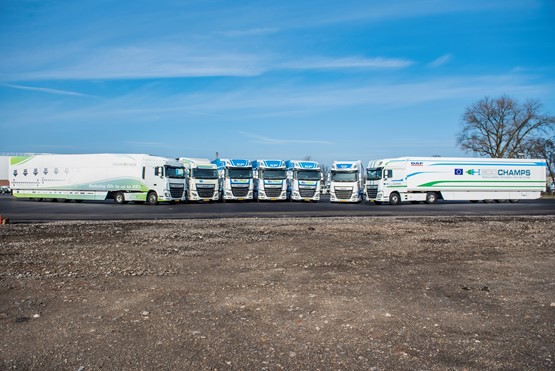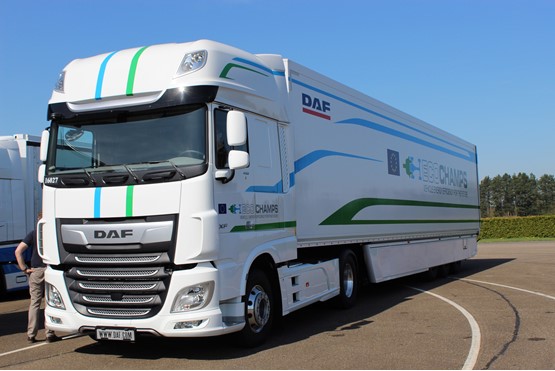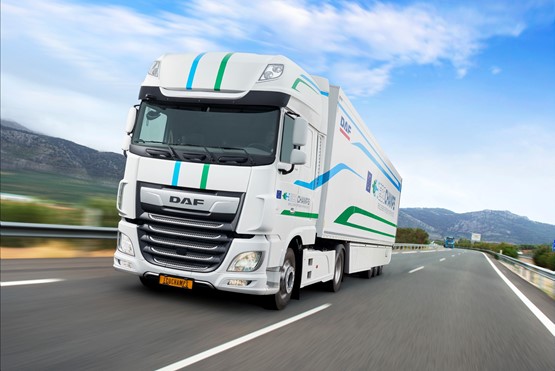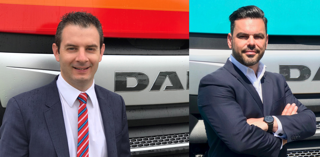Collaboration of 26 partners now at an end, but Daf Trucks feels elements of project have been a success. By Tim Blakemore
Six years ago, European makers of big trucks and buses were split. The cause of the schism was EU regulation 595/2009, better known as the Euro VI exhaust emissions legislation for trucks and buses.
Euro VI came into force for newly type-approved vehicles on December 31, 2012, and a year later for all new registrations.
Some manufacturers, notably Daimler and Scania, were keen to get their new Euro VI diesel engines out into the market as soon as possible, ahead of the legislative deadlines. Others deliberately held back for as long as they could.
At the time, then marketing director at the top-selling truck-maker in the UK, Daf Trucks, Tony Pain cheerfully admitted: “We will be as late as anyone with Euro VI.

"We don’t feel the pressure to launch early. In fact, the pressure is in the reverse direction, to use Euro V engines for as long as possible so we help mitigate the effects of the recession by not adding unnecessary costs.”
Fast forward to today and there seems to be a similar stark contrast between truck-maker approaches to new technology, this time over the introduction of all-electric drivelines to replace diesel engines.
And, again, Daf Trucks appears in less of a rush than some others, such as Daimler and Volvo, to unveil battery-powered vehicles. Daf Trucks product development director and chief engineer Ron Borsboom is unapologetic.
“Innovation for innovation’s sake has never been an objective,” he says. “The overriding priority for any development is to provide value to our customers.
"Our approach is to thoroughly prove our new developments before launch and to introduce them when the market is ready. That customer-focused strategy continues with electric and hybrid trucks, which will become alternatives for transport operators delivering into urban areas.
“Zero emissions and low noise levels are likely to be demanded in the future as cities announce their intentions for zero emission zones. This would create a need for our customers to have the right solutions.”
But it would be a mistake to conclude from this that Daf is being left behind by rivals in the development of alternatives to traditional diesel engine drivelines.
As if to underline the point, albeit discreetly, among the extensive line-up of Daf Trucks old and new on display as part of the Paccar company’s 90th anniversary celebrations at its Netherlands test track was an ordinary-looking, white XF two-axle tractor.
The first clue to the fact that its driveline is anything but ordinary comes from the ‘Ecochamps’ logo on its doors.

This XF’s 446PS, 11-litre, MX-11 Euro VI diesel engine drives not through any conventional transmission, but via a small 90kW ZF electric motor which is powered, when the diesel engine switches itself off, by a 17.5kW/h lithium ion battery pack from Samsung.
In other words, it has a parallel hybrid (diesel/electric) driveline of the type which has become increasingly familiar in cars and buses. But it has failed so far to catch on in heavy trucks, mainly because of the associated high kerb weight and initial cost penalties.
Daf is no stranger to hybrid drivelines of this sort. Its lightweight LF truck range, with gross weights from six-to- 12 tonnes, had the option of a parallel hybrid driveline added about eight years ago. But scarcely any operator could be found who was prepared to pay the high asking price. Production soon ended.
Then, in 2012, Daf joined two other truck-makers, Iveco and Volvo Group, as well as 10 big component suppliers (including ZF, Continental, Meritor and SKF) and a network of nine European research centres and universities in the EU-funded COnVENienT truck project.
The painfully contrived acronym stands for Complete Vehicle Energy-saving Technologies for heavy trucks. The €16.6 million (£14.6m) project, focused again on hybrid drivelines, ended in 2015.
One conclusion drawn from it by Borsboom and his colleagues at Daf is that there definitely is still potential for what he describes as “the best of both worlds”, meaning an ultra-efficient, ultra-clean diesel engine for long-haul truck operations, coupled in the same vehicle with an emissions-free electric motor for urban operation.
Small wonder then that when the European Commission (EC) came calling three years ago with plans for another hybrid driveline research project, Daf was keen to participate.
So keen, in fact, that the Ecochamps (European Competitiveness in Commercial Hybrid and Automotive Powertrains) project, with €21.1m (£18.6m) of EU funding in its €28.m (£25.1m) total budget, has been co-ordinated by Daf until its conclusion in May.
The 26 partners in the Ecochamps consortium include Daimler, Iveco, MAN, Renault Groupe, Bosch, Samsung, Ricardo and, significantly, Johnson Matthey Battery Systems (JMBS).

This was a UK-based division of the huge Johnson Matthey group until it was bought by diesel engine manufacturer Cummins early this year in one of the clearest signs yet of how electric and diesel/electric drivelines are increasingly seen as the future, even for heavy trucks.
“EC support for the Ecochamps project has produced a great opportunity to bring together a diverse pan-European consortium of complementary partners to work together, to define the technology requirements and challenges for the future next-generation electrified powertrain and energy storage systems,” says Allan Patterson, chief electrochemist at JMBS.
“The collaboration allows for the consideration of the implication for cost versus performance and to develop and deliver technology trying to address them, where the light duty automotive PHEV (plug-in hybrid electric vehicle) area is of particularly strong interest for JMBS as a tier 1 supplier.”
Specified main objectives of the Ecochamps project are:
- A modular framework recommending standards for electric hybrid drivetrain components and auxiliaries for commercial vehicles.
- A set of electric hybrid components for hybrid powertrains.
- Optimised drivelines for the selected vehicle classes.
- To demonstrate key innovations in two light duty and three heavier commercial vehicles.
- To assess the technology development in terms of efficiency, cost effectiveness, weight and volume.
The aim was to seek ways to make hybrid and electric powertrains more efficient, compact, lightweight, robust, and, above all, closer to being commercially viable.

Can the project be judged successful? The answer from Daf, at least, would seem to be a qualified “yes”. One specific Daf target was a 20% improvement in overall powertrain efficiency compared with “best-in-class vehicles of 2014”.
This is said to have been achieved, helped greatly by a waste heat recovery system from Bosch.
Another target was a 5% powertrain weight reduction by comparison with the Convenient truck.
That, too, is said to have been achieved, though this seems unlikely to please weight-conscious truck operators as the hybrid driveline kit in the Ecochamps XF is understood still to add a hefty 500kg to the truck’s normal kerb weight.
On the crucial question of cost, Daf admits that the target of a maximum 10% increase over a conventional diesel-engined XF still has not been met.
The story may be slightly different with the light commercial vehicle and city-bus hybrid drivelines developed in the Ecochamps project by Iveco and MAN respectively.
Unfortunately, their detailed conclusions have yet to be published and remain, frustratingly, in the section of the Ecochamps project deemed confidential to the participants.
Undeterred, Daf’s Borsboom evidently is determined to press on with hybrid driveline development even though the Ecochamps project is now complete.
He promises that more will be revealed on the Daf stand at the huge Hannover commercial vehicles show in September.


















Login to comment
Comments
No comments have been made yet.